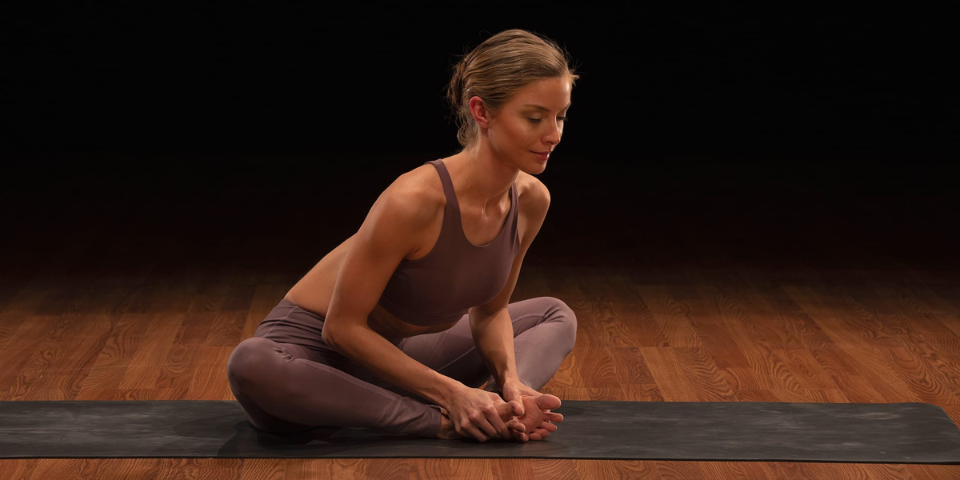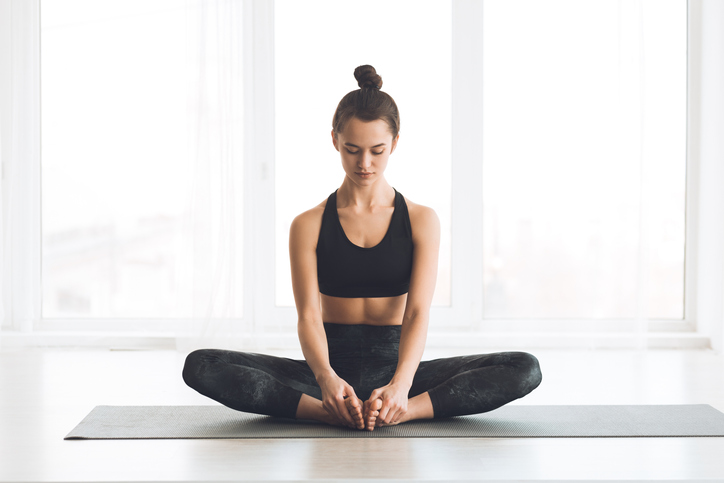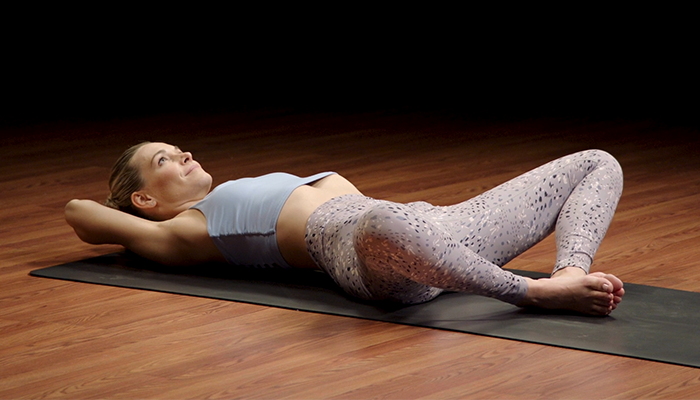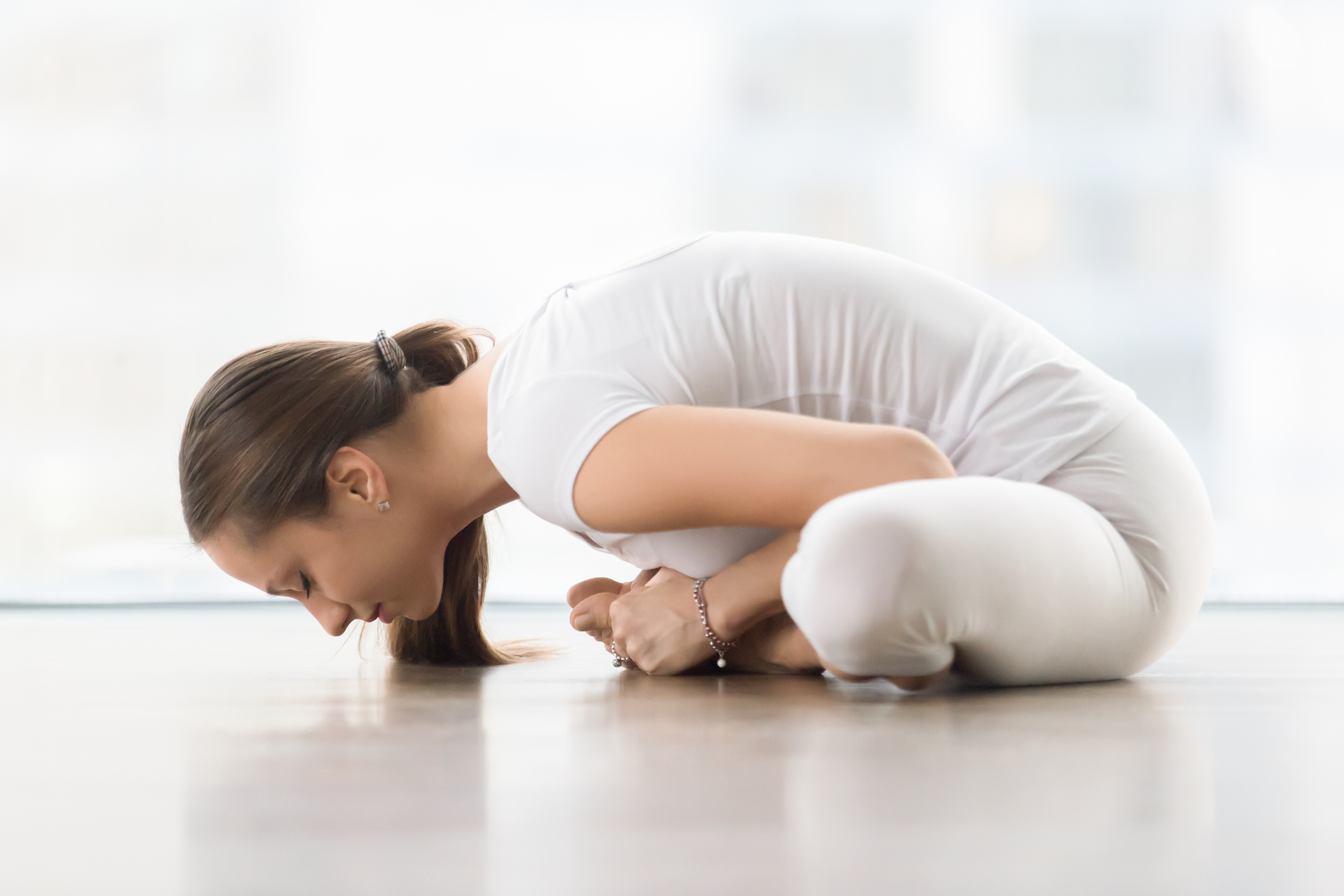How to Do Bound-Angle Pose in Yoga (Baddha Konasana)

Baddha konasana wins the prize for most aliases. Its common name is bound-angle pose, but it’s also known as butterfly pose, cobbler’s pose, and even soles pose, depending on the type of yoga you practice.
The direct translation from Sanskrit is bound-angle pose (baddha = bound, kona = angle, asana = posture/seat), and it gets that name because the soles of the feet touch while the legs bend at an angle. Once you’re in this pose, you’ll notice your bent legs also resemble butterfly wings.
At first glance, bound-angle pose seems like a quick way to separate the stiff from the bendy; getting the knees down and the hips open is a challenge if you’re muscular or tight.
Not to worry — there are plenty of ways to modify this pose whether you’re a new or seasoned yogi.
Bound-Angle Pose (Baddha Konasana): Step-by-Step Instructions
- Sit on the floor with your butt bones directly beneath you. (This keeps you from tucking your tailbone.)
- Bring the soles of your feet together, letting your knees fall to the sides. The outer edges of your feet should touch.
- Draw your heels as close to your groin as is comfortable.
- Place your thumbs on the balls of your feet, and wrap the rest of your fingers around the tops of your toes, as if holding an open book.
- Sit up as tall as you can, keep your gaze forward and your chest open, and hold for at least five breaths, up to one minute.
How to Make Bound-Angle Pose Easier
Baddha konasana opens the hips and inner thighs, but it can come at a steep price for the knees. Here’s how to make butterfly pose easier, to spare your knees undue strain.
- Place blocks or bolsters under your knees. If you have any previous groin or knee injuries, it’s even more imperative to support your knees.
- If your knees fall above your hip bones in this pose, sit on a folded blanket to elevate your hips or move your feet farther away from your groin.
- For a more restorative version, take supta baddha konasana (supta = reclined). Rest your upper back on a bolster, with your arms extended out to your sides like a T. Place blocks under each knee so you can fully relax.
How to Make Bound-Angle Harder
There are plenty of ways to deepen this pose, but be mindful of your knees. If they start to feel any strain, take a less intense version of bound-angle pose instead.
Here’s how to make baddha konasana more challenging.
- Move your feet closer to your groin (being mindful not to round your spine or tuck your tailbone).
- Maintaining a tall spine, fold forward without rounding your back or letting your knees roll forward. You want the movement to come from your hips.
- For a deeper stretch, press your elbows into your inner thighs, especially as you fold forward.
- Try this ashtanga version to stretch the back: Start in butterfly pose, then tuck your chin to your chest on an exhale. With your lower abdomen engaged, round your back and aim the crown of your head toward the arches of your feet. If you are flexible enough to get there, you’ll find your head has the perfect place to rest!
Bonus/Beginner’s Tips for Doing Bound-Angle Pose
It bears repeating: You should never feel baddha konasana in your knees. Beginners tend to mistake the “goal” of bound-angle pose with touching their knees to the floor.
In fact, butterfly is a hip opener that works on promoting external rotation of the thigh bones in the hip sockets. Here are some other tips for getting into bound-angle pose.
- When you begin to fold forward, gauge whether you’re putting undue weight onto your knees and legs. If so, you’re likely arching your back to compensate for a lack of hip mobility.
- Keep your spine long all the way down to get the most from baddha konasana. “The fold forward in bound-angle pose is often mistaken for an excuse to inspect your pedicure,” says Stephanie Saunders, BODi vice president of fitness programming and a certified yoga instructor. “If you focus on bringing your belly button — instead of your nose — to your feet, you will create extension through the spine and feel the stretch in your inner thighs and groin.”
- If you’re a runner, a cyclist, or are muscular and tight, butterfly pose may be challenging. Use as many props as you need — lifting your hips even as much as 12 inches — to get comfortable.
- Changing the angle doesn’t just alter the intensity — it alters where you feel the pose, too. “Bound-angle pose can change your focus, depending on the angles you’re creating,” says Saunders. “A longer angle created by the knees will extend different adductors farther than a shorter one, and will also cause different external rotators to work. So mix up how close your get your feet to your groin, to get all of the benefits of this pose.”
- Don’t ignore the cue to “open your feet like a book” — it can help your knees. “Sometimes yogis feel tension in their knees in baddha konasana, which is common when the soles of their feet are turned toward the ceiling,” says Saunders. “One way to ease the strain is to push the outer edges of your feet into the mat, which can help stabilize the lateral ligaments of the knees.”
Benefits of Bound-Angle Pose
Baddha konasana offers an array of advantages for the lower body and spine.
Opens the hips and inner thighs
Bound-angle pose stretches the hips, inner thighs, and groin, including the adductors and the sartorius (the longest muscle in your body, it helps to flex and rotate your thigh at your hip).
Baddha konasana helps to improve the external rotation of your hips, and, when you fold forward, stretches your abductors, including the glutes and tensor fasciae latae.
Lengthens the spine
While we mostly think of it as a lower-body pose, baddha konasana also helps promote better posture by lengthening your spine and the muscles that support it.








